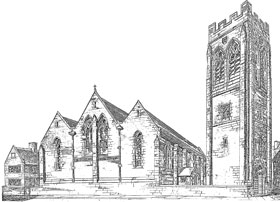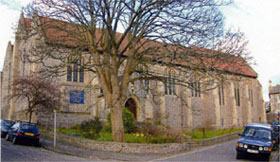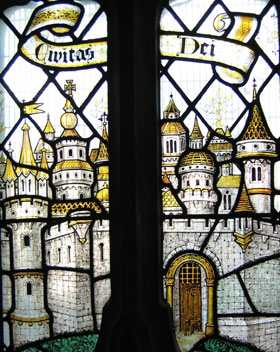 Contrary to the beliefs of most day-trippers, Weston-super-Mare is an ancient place, though little more than a former Rectory, sea-front thatched cottage and an unusual Latinised Saxon name survive to remind us of long-gone village days. The mediaeval parish church was lamentably razed in 1824 to be replaced by the present St John's Church as the watering place sought to become a fashionable resort. Brunel's railway arrived in 1841, ushering in a frenetic pace of speculative building as mass tourism arrived.
Contrary to the beliefs of most day-trippers, Weston-super-Mare is an ancient place, though little more than a former Rectory, sea-front thatched cottage and an unusual Latinised Saxon name survive to remind us of long-gone village days. The mediaeval parish church was lamentably razed in 1824 to be replaced by the present St John's Church as the watering place sought to become a fashionable resort. Brunel's railway arrived in 1841, ushering in a frenetic pace of speculative building as mass tourism arrived.
Whereas revival of Catholic forms of worship within the rather sober Church of England progressed with fervour and controversy in London and elsewhere, it was not until the end of Victoria's reign that Oxford Movement influences arrived in Weston-super-Mare. Local worthies with Masonic backing were determined to show development could be on a par with grander places, and invited George Bodley to submit plans for a new church. Bodley was then at the peak of his career; the grand old man of 14th century Gothic, a Royal Academician and RIBA Gold Medallist.
 Beginning in 1898, the church was opened for worship in 1902, though a south aisle and Lady Chapel were not completed until 1925, by F.C.Eden, and the great detached bell tower planned by Bodley to stand at the south-west corner never left the drawing board.
Beginning in 1898, the church was opened for worship in 1902, though a south aisle and Lady Chapel were not completed until 1925, by F.C.Eden, and the great detached bell tower planned by Bodley to stand at the south-west corner never left the drawing board.
All Saints as completed is a wide, triple gabled building with stately Decorated arcades, simple arched mouldings, and boarded wagon roofs which produce fine acoustic qualities. Constructed of grey Mendip Carboniferous limestone, with Bath stone dressings, its width, large perpendicular windows designed by Eden, and white plaster produce a bright and open effect. Sir John Betjeman rated All Saints "the finest church of entirely modern foundation in Somerset".
The church possesses many fine examples of the furnishings. vestments and frontals designed by Bodley, all of which remain in regular use. The carved wooden Rood Screen, choir stalls and wardens' stalls are to Bodley's design, and his superb oak pulpit was carved by Zwink in Oberammergau. The seven statues emphasize the "Word", with Saints Matthew (angel), Mark (lion), John the Baptist (Iamb). Paul (sword). Peter (key), John the Evangelist (eagle) and Luke (bull). Links between English churches and Austrian wood carvers came to an abrupt end with the outbreak of hostilities in 1914. The font is also Bodley's, though the 1949 Classical cover is by Randoll Blacking. Robert Potter added the south porch in 1955, with its exterior niche housing the highly acclaimed Madonna and Child by the sculptor Laurence Broderick. The Chapel of the Sacred Heart contains some fine works, with a Bodley altar frontal and silver altar set by Robert Potter.
 The Sanctuary should ideally be completed by a richly carved and gilded reredos, but funds never ran to this, and tapestries were substituted, which faded over time and were eventually removed. More recently Watts, the London church furnishing company, supplied new curtains to Bodley's original design. The 1917 East Window has glass by Charles Kempe. It portrays the Crucifixion with the Archangel Michael overcoming the Devil. Warrior kings and saints add to the dignity of this First World War memorial.
The Sanctuary should ideally be completed by a richly carved and gilded reredos, but funds never ran to this, and tapestries were substituted, which faded over time and were eventually removed. More recently Watts, the London church furnishing company, supplied new curtains to Bodley's original design. The 1917 East Window has glass by Charles Kempe. It portrays the Crucifixion with the Archangel Michael overcoming the Devil. Warrior kings and saints add to the dignity of this First World War memorial.
Eden's Lady Chapel is a gem with superb windows. The chapel's east window is said to be one of the best examples of early 20th century work in England, with its unusual central statuary. Stained glass on the south side of the chapel was introduced in 2003 from the redundant St Saviour's Church where Eden had also been employed.




